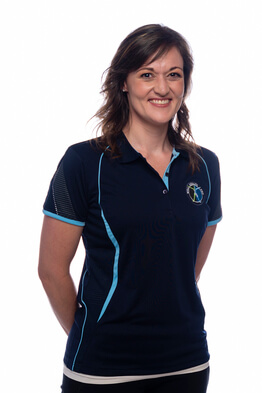What is diagnostic ultrasound?
Diagnostic ultrasound gives us real time images or what is occurring inside our bodies. We are all familiar with expecting parents going for a scan to see the image of their new baby for the first time. The image shows, in real time, the baby inside and the movements it is doing. This type of scan uses ultrasound waves to produce the image and is completely safe.
Similarly, physiotherapists use diagnostic ultrasound to image all types of tissue in the body. It is a very helpful tool that we use to help us get an accurate diagnosis and also helps in making treatment more targeted. Whilst using the diagnostic ultrasound, we can detect tissue damage such as muscle or ligament tears, see areas of swelling and inflammation and also monitor how muscles are being used and activated. This is a great tool for an initial assessment and shows us how your progress at the end of a series of treatments. If anything concerning or out of the ordinary is seen on the scan, we may refer to a specialized musculo-skeletal sonographer to assess and report in more detail.
Physiotherapy treatment can be enhanced by using diagnostic ultrasound. It is used to see which muscles are being activated and also help a patient see how to contract the correct muscles. The ultrasound is used to help guide our physio when doing certain manual therapy techniques or when using dry needling.
Diagnostic ultrasound is mostly thought of as an imaging device that is mostly used by doctors to see what injuries have occurred. Alternatively, it is a test that you get referred for and have to go to a radiology department to get done. However, we as physiotherapists, are also using diagnostic ultrasound to improve our diagnosis and treatments. It is a very safe and painless technique and helps greatly to improve the results for our patients. Accuracy and targeted treatment is what we this tool provides. We use it together with all our assessments tools and clinical expertise to arrive at a diagnosis as an additional confirmation.
What exactly is diagnostic ultrasound?
Ultrasound is a sound wave that is generated and that travels with a very high frequency. As it travels through different tissues, there is absorption and reflection of the waves that occurs and each tissue reflects the soundwaves differently. A receiver then picks up the reflected soundwaves and this is how we see an image on the screen. This occurs continuously in real time and as we move the receiver in different ways to pick up any changes in the tissue. Also, because it occurs in real time, it can pick up how tissues move or how muscles contract, thus making it a useful diagnostic and therapeutic tool. The machine is set up to focus on different depths and can show different contrasts to show up the slightest changes that need to be seen. A muscle flicker, swelling dissipation or healing tissue formation.
The soundwave that is generated is the same as the wave we use for treatment ultrasound. The treatment ultrasound is a different machine and does not have a receiver to pick and display the images. The intensity and frequency of the treatment ultrasound is much higher and is targeted at specific depths or tissues we want to treat, which we do not do with the diagnostic ultrasound.
Why we use diagnostic ultrasound
- Diagnosis – This is a great tool to assist the therapist in getting to a more accurate diagnosis. Precision and classification of tissue damage and severity is established. Numerous structures in a area can relate to multiple structures being injured at the same time. It is important to establish the hierarchy of priority. It is always used with all the other physical tests that a therapist will do at an initial assessment.
- Therapeutic – The imaging guides the therapist in being more accurate and effective during a treatment to see in real time what is happening. It is also used as a training tool to help patients engage muscles correctly and have feedback on how they are progressing. Firing the right muscle group when you contract is vital to ensure forces follow the correct sequence to produce power.
Do you need to have a diagnostic ultrasound scan?
The benefit of using diagnostic ultrasound enhances the accuracy of our diagnosis and expand the success of our treatments. This allows our therapists to move forward with confidence in their clinical findings and ensures more constructive treatment. The ultrasound scan measures any progress made during a series of treatments, this can range from seeing a reduction of swelling, muscle mass gain, healing of a muscle or ligament tear size, and quality of muscle contractions.
These are all measurable on the screen for the therapist and patient to see and provides an objective test for the progress achieved during therapy. To see the changes on the screen also gives patients peace of mind when they see the repair process happening. This often reduces worry that an injury may re-occur or has not healed completely. This is especially important when we do return to sport rehabilitation where the injury will be tested to its maximal extent again. We must ensure that the tissue is able to withstand the rigorous forces placed on it, so that you’re safe.
“The more information we can gather during an assessment, the more precise and successful the treatment “
The Technique
Sound waves travel better through solids and liquids than through air. This is why your therapist uses ultrasound gel on the applicator and on the scanning site. The gel transmits the sound waves through the tissues more efficiently and thus allow the therapist to get the best possible image to help with the diagnosis and treatment.
Investigative
Depending on the site and depth of the structure being examined, the therapist may apply some pressure on the applicator to get good contact and proper sound wave conduction. This pressure should not be painful at all. The imaging causes no sensation that you will feel and has no after effects. Your therapist then moves the applicator in various directions and changing their view in a horizontal and vertical plains to image the structures appropriately. Measurements and screenshots is taken to be used for future reference.
Feedback
When the diagnostic ultrasound is used for therapeutic reasons, the applicator may be held stationary in the correct position by your therapist and you can then monitor the specific intervention being done. For example, the therapist may use it to show you which specific muscle they want to activate and the image gives you visual feedback to see if you are managing it correctly.
Precision
Another use during treatment may be if your therapist wants to ensure they are targeting the correct site when they apply dry needling. The ultrasound can then follow the needle path until the correct structure is achieved.
Anatomical Changes you’ll notice
Sound waves travelling through the different tissues are reflected back at different rates and wave lengths. This is a completely painless and sensationless procedure and will not effect anything at the structural level. The sound waves that are being used are at such low intensities that it’s absolutely safe to use and will not produce any cellular or physiological changes in the tissue.
What can you expect to feel during diagnostic ultrasound?
You will be asked to expose the area that must be examined and all jewelry in the area would also need to be removed. Your physiotherapist will apply a colourless gel on the ultrasound head (transducer) and may also apply some on your skin. The gel may feel a little bit cold but other than that, there is no sensations or reactions to the gel. The ultrasound head is then placed on the skin and there may be some pressure applied by the therapist during the investigation. If there are deeper structures to be assessed, your therapist may need to press a bit deeper to get a clearer and more accurate image, but this should not cause pain.
The ultrasound head is then moved around in different directions while we identify the structures on the screen to determine the correct location of what we want to see. This may involve the head being moved horizontally and vertically, as well as rotating the head to get a more complete diagnostic image of the entire area. However, when your therapist uses the diagnostic ultrasound for therapeutic treatment, they will look to locate the structure being treated and then keep the head steady to see the effect of the treatment intervention being used.
How long does diagnostic ultrasound take?
This can vary greatly depending if we are using it for diagnosis or treatment. The time for diagnosis can be anything from 2 to 10 mins according to how many structures are being looked at, the depth of these structures and the complexity of the injury (which would have been assessed during the interview and clinical examination).
With therapeutic use, the ultrasound may be used various times during the treatment session while it is combined with the other treatment techniques. Your therapist is an expert on deciding when to combine the various treatments to achieve the best results during the session.
How many times should diagnostic ultrasound be done?
In the main, the diagnostic ultrasound is used as a tool to help the therapist to make a more precise diagnosis and help them prepare an effective treatment program. This may be used as a once off investigation, or it can be used over the following treatment sessions to monitor the progression of the injury. Depending on the nature of the injury, it may not be advisable to have it done at every session, because the physiological changes that occur may be small. It may be more appropriate to re-investigate after a certain amount of treatment session (4 or 6) to see any meaningful changes. At the end of the treatment regiment, when we have full function and healing, a re-examination may help to ensure that everything is working properly and can be used as a clearing test for a return to sport.
Similarly, during treatments, it may not be required to use the diagnostic ultrasound for every session. It is usually reserved for techniques when we require extreme accuracy or to use as an addition feedback for specific exercise. The treatment session is made up a large variety of treatment techniques and modalities and how these all work together is what our physios do on a daily basis – and they do it well!
What can I do at home to ensure the diagnostic ultrasound is effective?
Remember, this is a diagnostic tool and helps us make the treatment more precise and effective. It is only a part of the entire treatment and rehabilitation. Your therapist will explain your condition to you in detail and discuss the treatment plan going forward. We are experts in giving home advice and exercises that can help with decreasing stress on the injury, as well as a program of stretches and strengthening to speed up your recovery. Some of the things to discuss with your therapist:
- Rest, partial rest or normal activity
- Heat or cold treatment (and how long to use)
- Sleeping, sitting and standing postures and positions
- Stretches and strengthening requirements (how long to hold or how many sets and repetitions)
Cost of diagnostic ultrasound?
The diagnostic ultrasound is part of a comprehensive assessment and treatment that is done by your therapist. It is a diagnostic tool that helps us be more accurate and is never done as a stand alone investigation. As such, there is no cost to the diagnostic ultrasound, but it is incorporated as part of your entire physiotherapy session. Our therapist uses this tool to get an idea of the structures involved, but are not professional sonographers. If anything strange is picked up or they are unsure, they will refer you to a specialized musculo-skeletal sonographer to have a more in-depth scan.
Medical Aid Code – 006
There is no medical aid code that we charge as the diagnostic ultrasound is used as an assessment tool and treatment guide. It is included in your assessment and treatment sessions as required.
Does it make a difference to have an experienced physiotherapist use the diagnostic ultrasound?
As with all our assessments and treatments, it is important to have a therapist that fully understands the anatomy, physiology and healing processes to treat you effectively. Experience also helps to perform the various treatment modalities correctly and efficiently. When it comes to diagnostic ultrasound, this is even more important. A thorough understanding of how the body’s anatomy works and what we expect to see on a normal scan. It can often appear as just a mess of grey and white images on the screen. Having an experienced therapist that is comfortable with imaging is essential to interpret what we get to see correctly.
Our physiotherapists have years of clinical experience and in depth knowledge of your body’s anatomy. They understand different painful conditions and injuries and will know exactly what to look for or how to incorporate the imaging within your treatment program. Also, we have referral partners that we rely on to investigate more thoroughly, if needed, and our therapists will send you when necessary.





